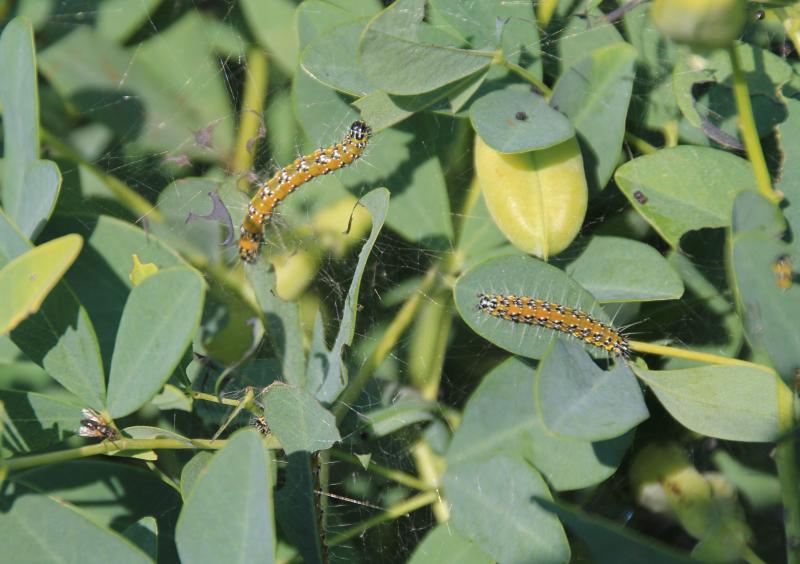Pest Profile

There is a new pest problem for flower growers that enjoy Baptisia (false indigo) called the Genista Broom Moth. It is actually the caterpillars that cause the damage. Like most moths, all the adults can do is feed on nectar since they do not have any chewing mouth parts as an adult.
This insect pest is native to the SW United States but usually doesn’t make it up into our colder climate. Last year there were many reports of this insect causing feeding damage to Baptisias along the East coast, but this is the first time I have seen it here at McCrory Gardens. They may also feed on other members of the Pea (Fabaceae) family including flowers like Lupine, shrubs like Caragana, Genista and honeysuckle, and potentially trees like Kentucky coffee tree and honey locust.
Lifecycle
The adult moth lays eggs on the plants. Then the young larvae web leaves together and feed on the leaves inside the web until they grow a bit larger. Then they move out and start feeding on other parts of the plant or move on to other plants. The larvae can grow to about 1” long, are a dark tan-orange with white hairs and black spots. Normally, they will have two generations per year, but in our shorter growing season they may only have one generation per year.
The good news is that they will not likely kill a plant, just cause feeding damage to the leaves, which may cause them to turn black. However, if they become a more common pest here in this part of the country, they could damage young, newly established plants if they become defoliated a few years in a row.
Management Tips
Treatment can be as easy as just trimming off the affected foliage, hopefully removing the caterpillars with the leaves. You can pick off others and squish them to provide pretty good control. If you catch the infestation early, you can use a B.t. (Bacillus thuringiensis). This is a bacteria that you spray on the plants so it gets ingested by the caterpillars and kills them. It is effective for any type of caterpillar pest but normally doesn’t work well for more mature larvae. Other products that contain spinosad or permethrin will work well on young larvae and are more effective on mature larvae too.


